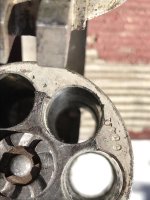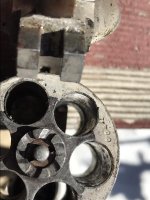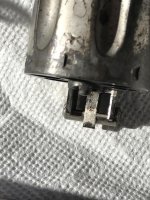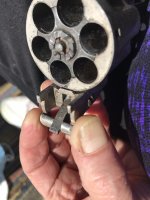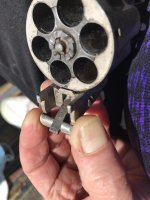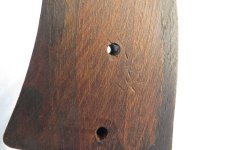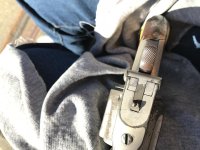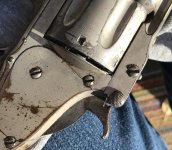I may be wrong, I thought that I was wrong once before but I was mistaken, but my old eyes almost seem to see U 799 as the mark on cylinder and frame butt. Normally the guns that I have observed (and that is a small sampling compared to the antique experts here) it is a letter and one or two numbers, not three.
It is possible that someone chose to use three numbers to use as assembly numbers but it also may just be a misread by my old eyes.
Pam, stock removal is not impossible but should be done very carefully. Usually, the older the gun, the harder they may be to remove. Years of accumulated gunk can almost glue them in place. The other major stock destroyer is the locator pin. If you do not remove the stock straight up from the frame and off the pin but push them at the top in an angle to the butt, the locator pin can crack or break the stock or cause a huge chip.
The key is to loosen the stock screw except maybe the last thread and then gently tap on the screw head driving the opposing panel downward. Place a soft cloth below to catch the stock. Once the one panel is removed, turn the gun over and gently tap on the inside of the remaining panel through the opening in the frame. It too should drop to the cloth. Once the panels are removed, clean the gunk from the frame and apply a coat of Renaissance Wax so sticking in the future will not be a problem. Probably wouldn't hurt to clean any residue from the panels as well.
If stocks seem to be stuck and won't budge, try gently heating them and the frame with a hair dryer. Many times a little heat will break the gunk bond and facilitate their removal.
Hope that helps.


